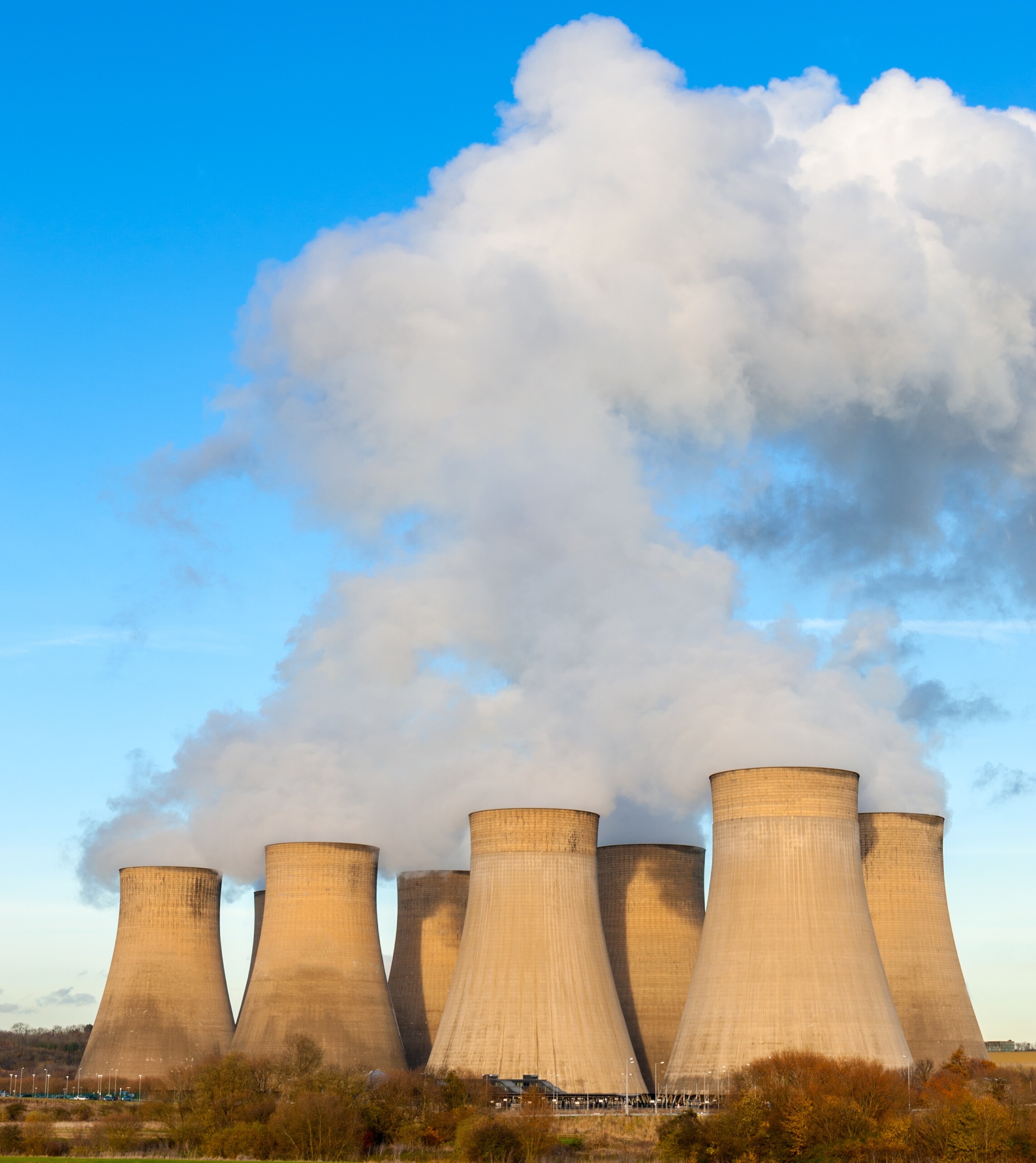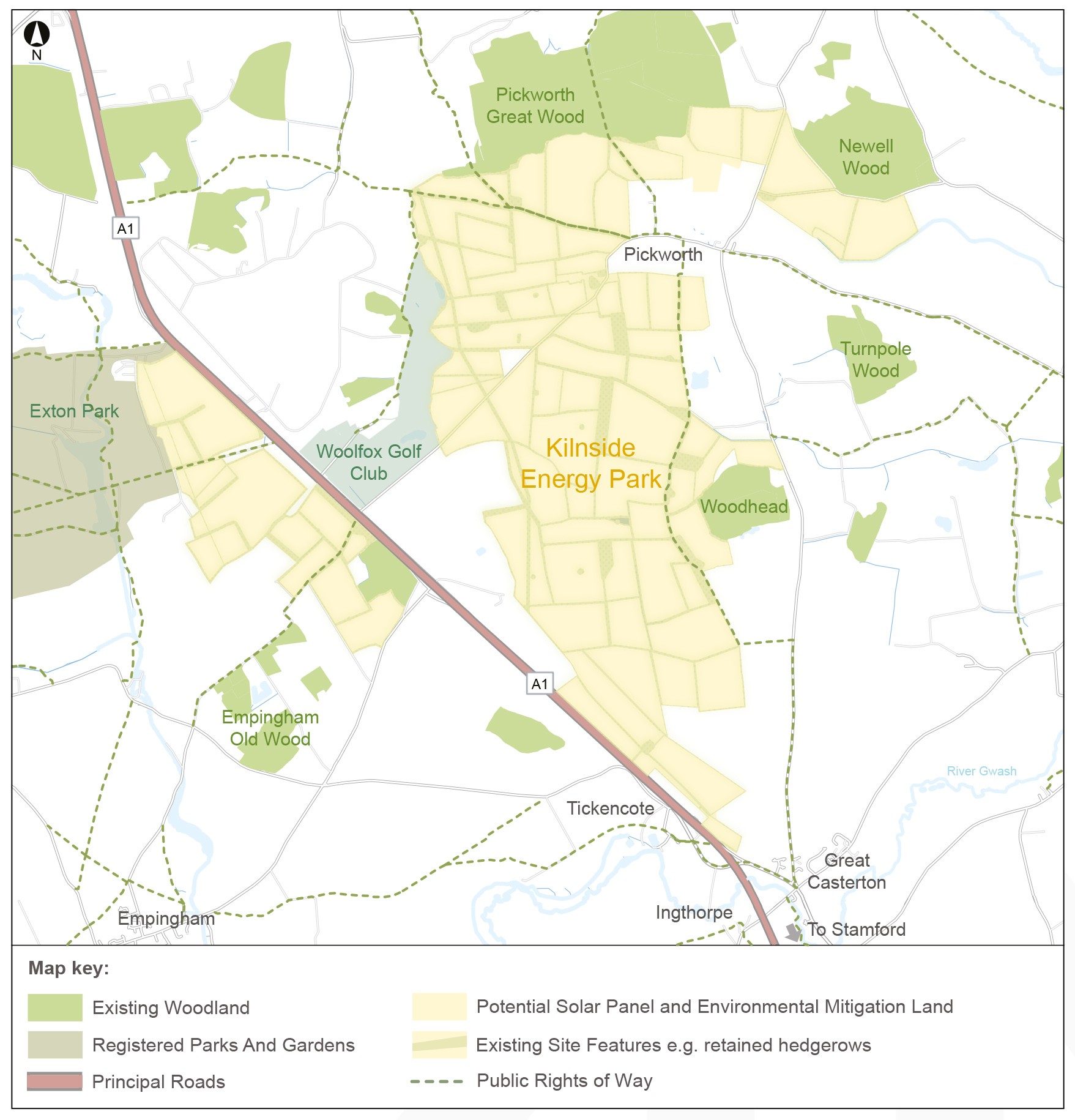About Kilnside
Kilnside Energy Park is a proposed solar farm with battery storage that would be located to the northwest of Great Casterton in Rutland. We are currently at an early stage of development and are beginning the engagement and assessments that will help us design the project in a manner that is sensitive to the local environment and community.
Draft Concept Plan and Project Location
This is the initial concept plan showing the potential solar areas and other infrastructure.
This is the land we are looking to include in the project. The red area indicates the potential area for solar development and other infrastructure, while the blue areas are the current cable route search areas. These will be refined through consultation and environmental assessments as the project develops.
In addition to the technical components, a well-designed solar farm includes green spaces between and around the panels. These areas protect existing wildlife and create new habitats for native species to help increase biodiversity, while protecting and expanding recreational opportunities for local communities.
In general, solar farms are good habitats where wildlife can flourish. The mix of native species under and around the panels can support a diverse ecosystem of insects, birds, bats, small mammals and other wildlife. Solar farms are quiet places with little activity and few, if any, chemicals needed for maintenance, allowing wildlife to thrive beneath and between the panels.
Read more from the RSPB about solar farms and birds here.
All existing public rights of way will be maintained, with sizable offsets around them to ensure that existing recreation routes are protected. We could also include new permissive paths to expand recreational opportunities across the site. These will be informed through consultation with the community.
Energy is critical to our daily lives, to power our homes, businesses, and transportation, but the way that we meet these needs across the country is changing.
Why is Kilnside needed?
The UK has set a target for clean power by 2030 to help in the fight against climate change, support energy security and help reduce energy costs.
We are cutting our reliance on fossil fuels, including coal and natural gas, to generate electricity. This means we need new renewable energy sources, such as wind and solar, to replace them.
At the same time, our demand for electricity is projected to double by 2050. This is due to the transition from traditional fuels to electricity to heat our homes and power our vehicles, as well as growing demand for the internet and data centres. To meet our growing energy needs with clean energy sources, we need to quickly ramp up development of solar and wind.

The last coal power station in the UK closed in 2024. We need new renewable energy sources to come online to replace the older sources of energy.
Why this site?
First, the National Grid connects power users to power sources across the UK through a network of substations and overhead power lines. New energy projects can only connect into the National Grid where there is capacity, which is rare. We have secured an agreement to connect to the existing National Grid electricity transmission line between Ryhall and Casewick.
Second, once a grid connection is secured, we need to find land near the connection point that is suitable for solar. Generally, the best land for solar is flat or slightly south facing and avoids environmental designations such as ancient woodlands or sites of special scientific interest (SSSI). It should also be located away from population centres and have good screening from existing hedgerows to help reduce visual impacts.
In addition to meeting these standards, the land we have identified for Kilnside is also identified within the emerging Rutland Local Plan as suitable for solar.
Who is proposing Kilnside Energy Park?
Kilnside Energy Park is being developed by Aukera, a renewable energy company contributing to the transition to clean energy across Europe. We specialise in energy generation and storage projects, working through the earliest stages of planning to building and operating projects ourselves.
Our projects in the UK have the potential to generate more than three gigawatts of solar energy – that’s enough to power more than 900,000 homes and save more than 660,000 tonnes of carbon dioxide every year.
We always work with local communities to help ensure local benefits and support local needs as we bring projects forward.
Further information about the project
Learn more about the proposals through the community webinars below:




